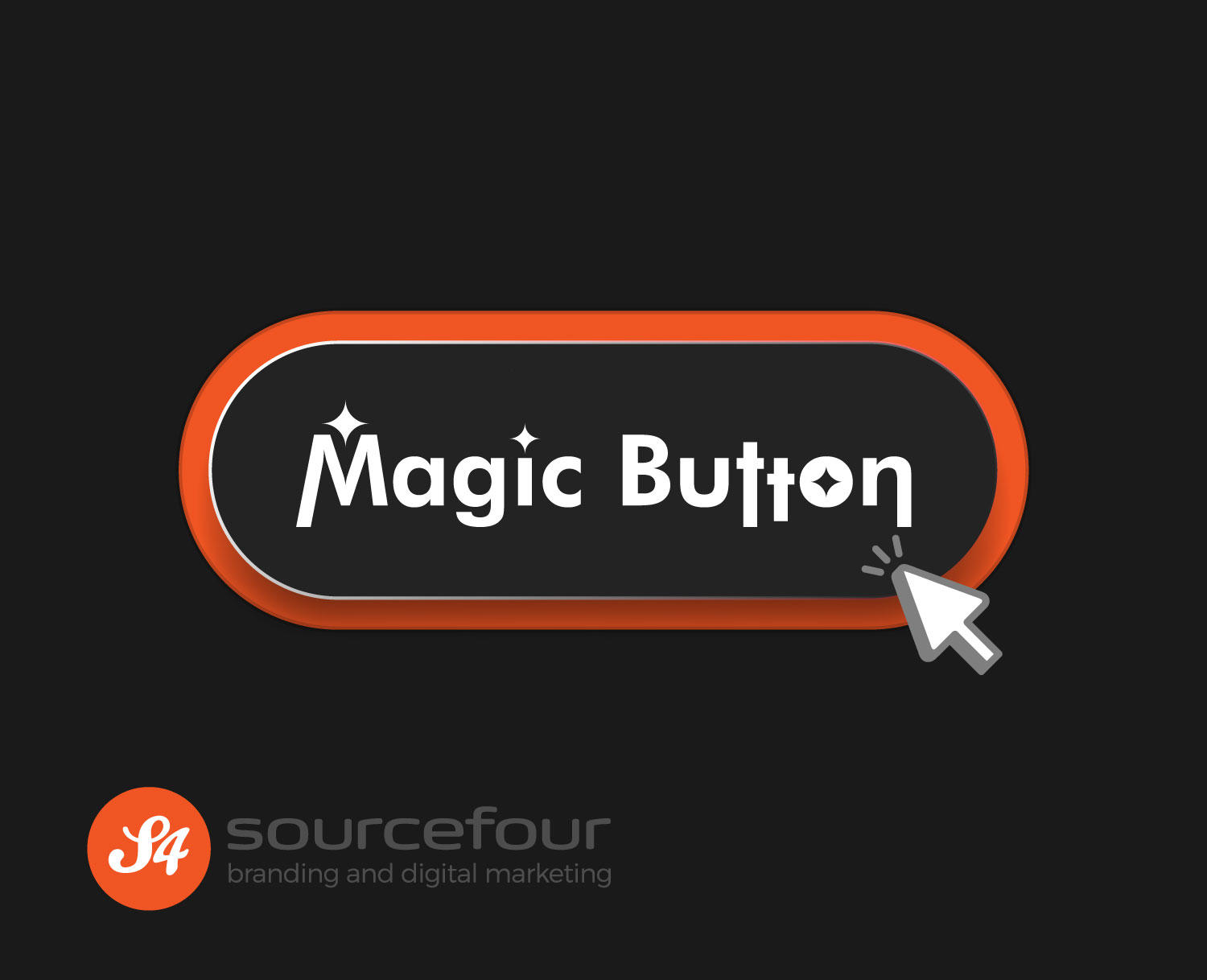We often meet businesses searching for that elusive ‘magic marketing button’ – the one perfect tactic that will flood their business with customers overnight.
You’ve probably heard the promises, and maybe you’ve even tried, and been disappointed by them.
“This SEO trick will get you to page one on Google!”
“Our Facebook ads system guarantees leads!”
“Just use this email template for instant sales!”
But here’s the uncomfortable truth. There is no magic button.
Marketing success doesn’t come from a single brilliant tactic or channel. It comes from building solid marketing foundations and executing consistently across multiple fronts.
Understanding the marketing foundation
Before diving into tactics, every business needs to understand the comprehensive marketing mix, often called the 7Ps. These fundamentals form the backbone of effective marketing.
Product (or service)
What you’re actually selling must solve a real problem and deliver on its promises. The best advertising can’t save a poor product.
Price
Your pricing strategy affects everything from perceived value to profit margins. It’s not just about being cheaper or more expensive – it’s about aligning price with value and positioning.
Place
How and where customers access your offering matters enormously. This includes your distribution channels, locations, and availability.
Promotion
This is the visible part and what most people think of as ‘marketing’ – your advertising, content, PR, and communications. Although very important, it cannot be treated in isolation.
People
The team that delivers your product or service and interacts with customers. Their skills, attitudes, and service quality directly impact marketing effectiveness.
Process
How you deliver your product or service, including customer journeys from awareness to purchase and beyond. Clunky processes undermine even the best promotions.
Physical evidence
The tangible elements customers experience – from your packaging and store environment to your website design and documentation.
The domino effect of getting it wrong
Marketing operates as an ecosystem where weakness in one area of the marketing mix undermines effectiveness everywhere else.
Let’s take a look at some examples;
Amazing ads, terrible website
A local retailer spent thousands on great Google ad campaigns that drove impressive traffic to its site. However, the website loaded slowly, wasn’t mobile-friendly, and had a confusing checkout process. The result? A 90% bounce rate and almost no conversions despite excellent ad performance.
Promises that didn’t align with reality
A professional services company that made grand claims about delivering a highly personal service, but then cut costs by replacing senior people with junior staff and standardised processes. This disconnect between marketing promises and service reality destroyed client trust, causing their critical referral rate to plummet and devastating their business pipeline.
Strong social presence, weak fulfillment
A boutique clothing brand built an engaged Instagram following with stunning product photography. Orders flooded in, but their fulfillment system couldn’t keep up. Late deliveries and poor customer service led to negative reviews, undermining all their social media success.
Compelling offers, broken email system
A gym ran a fantastic new member promotion, but their email delivery system had technical problems. Follow-up messages landed in spam folders or never arrived. Potential members lost interest during the gap.
In each of these examples, a weakness in one marketing area sabotaged otherwise solid efforts.
Get your foundations right before spending big
Before investing in expensive campaigns or activities, make sure you’ve got these fundamentals firmly in place.
Know exactly who you’re talking to
Develop detailed customer personas based on real data and knowledge, not assumptions. Understand your audience’s problems, motivations, and decision-making processes.
Talk to your customers about why they came to you and their experiences with competitors. Also, talk to the people who interact with your prospects and customers; they can give you insights into the minds of your customers and prospects.
Have a compelling, clear value proposition
Can you articulate in one sentence why someone should choose you over competitors? If not, work on this before anything else.
Build a website that works
Fast loading, mobile-friendly, clear navigation, and straightforward conversion paths are non-negotiable basics.
Don’t forget to focus on your content. We see many times that websites are built with little thought to content resulting in sparsely populated pages, generic content and poor call to actions.
Set up proper tracking
You need to know what’s working and what isn’t. At minimum, Google Analytics should be implemented properly, and conversion tracking set up. If you get leads through the telephone or face to face, ask where they heard about you.
It can be nigh-on impossible to accurately attribute every lead to a source. In fact, there are often multiple touch points before people come into a shop, pick up the phone or make an online order. But getting what data you can will at least give you some information to bhase future marketing decisions on.
Create consistent branding
Your visual identity, messaging tone, and core values should be consistent across everything you do. Issues often come up when multiple people or agencies are involved in creating marketing assets or promotions.
Brand guidelines are a good way of ensuring consistency across multiple suppliers. But you will need to police it. Don’t just assume they will follow the guidelines because they have them.
If you have internal team members creating content such as social media posts, graphics, or emails, tools like Canva are useful. Again, make sure there are brand assets and rules set up, and ideally, templates. Letting people do what they think ‘looks right’ is a surefire way of inconsistency creeping in very quickly.
Establish fulfillment systems that can scale
Make sure you can actually deliver on what you promise in your marketing, whether that’s products, services, or information.
Pick your battles
It might be tempting to want to be everywhere, but unless you have very deep pockets and lots of resources, this will not be an effective strategy.
Start with your target audiences and decide where they ‘hang out’ and, therefore, what the best channels are to reach them.
Be realistic about your budget. If you can only afford one very small ad in a trade publication, ask yourself if this is an effective use of the money. Some channels require a bigger investment to be effective.
Look at what can be done cost-effectively and focus on these options and activities.
The path to marketing success
Instead of hunting for magical shortcuts, successful marketing requires:
- Building strong foundations across all 7Ps
- Creating a coherent strategy across channels
- Consistent execution over time
- Regular measurement and refinement
- Patience while momentum builds
Marketing isn’t about finding a secret button to press – it’s about building a machine with all the right parts working together. When your Product, Price, Place, Promotion, People, Process, and Physical Evidence all align and reinforce each other, that’s when marketing truly becomes powerful.
The businesses that understand this simple truth are the ones that ultimately outperform competitors still chasing marketing magic. They build comprehensive systems where each marketing element supports the others, creating something far more powerful than any single tactic could deliver.
When you’re ready to stop searching for marketing magic and start building something that actually works, we’re here to help. At Sourcefour, we focus on creating marketing systems with strong foundations that deliver consistent results.


